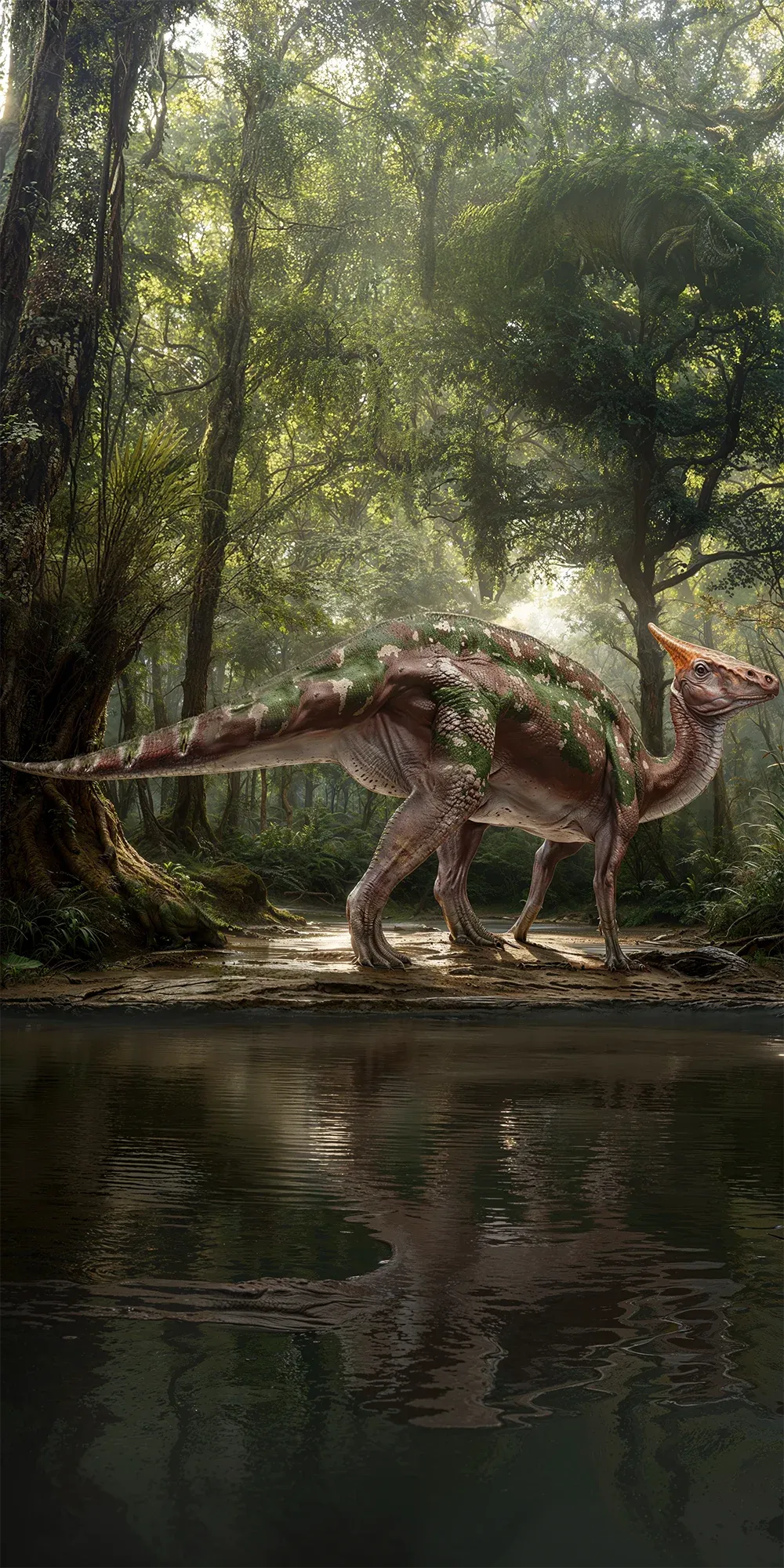The Saurolophus
The Saurolophus, also known as the "crested lizard," was a large herbivorous dinosaur that roamed North America and Asia during the Late Cretaceous period. It had a distinctive crest on its head, a duck-like bill, and a long, stiff tail. Saurolophus walked on four legs and could reach lengths of up to 40 feet.

| Saurolophus | |
|---|---|
| Size | Approximately 30 feet (9 meters) in length |
| Weight | Around 3-4 tons (2,700-3,600 kilograms) |
| Speed | 25mph (40km/h) |
| Key Strength | Powerful hind legs for defense |
| Biggest Weakness | Vulnerable neck and sides |
| Scientific Name | Saurolophus |
| Family | Hadrosauridae |
| Habitat | Open areas with access to water sources |
| Geography | North America |
| Diet | Herbivorous |
| Lifespan | 20 years - 25 years |

The Saurolophus
The Saurolophus, also known as the "crested lizard," was a large herbivorous dinosaur that roamed North America and Asia during the Late Cretaceous period. It had a distinctive crest on its head, a duck-like bill, and a long, stiff tail. Saurolophus walked on four legs and could reach lengths of up to 40 feet.
Fun Fact: Saurolophus is believed to have lived in herds, similar to modern-day herbivores like bison or wildebeest.
| Saurolophus | |
|---|---|
| Size | Approximately 30 feet (9 meters) in length |
| Weight | Around 3-4 tons (2,700-3,600 kilograms) |
| Speed | 25mph (40km/h) |
| Key Strength | Powerful hind legs for defense |
| Biggest Weakness | Vulnerable neck and sides |
| Scientific Name | Saurolophus |
| Family | Hadrosauridae |
| Habitat | Open areas with access to water sources |
| Geography | North America |
| Diet | Herbivorous |
| Lifespan | 20 years - 25 years |
Saurolophus Matchups
We use AI to simulate matchups between the Saurolophus and other animals. Our simulation considers size, strength, and natural predatory behaviors to determine the most likely outcome.

Can't find the Matchup you want?
Create Your Own MatchupSaurolophus: Diet, Predators, Aggression, and Defensive Behaviors
What did Saurolophus eat?
Saurolophus were herbivorous dinosaurs, meaning they primarily fed on plants. Their diet likely consisted of ferns, cycads, and other vegetation that was abundant during the late Cretaceous period.
Did Saurolophus have any predators?
As herbivores, Saurolophus may have been preyed upon by carnivorous dinosaurs such as Tyrannosaurus rex. Fossil evidence suggests that large carnivores would have been a threat to Saurolophus populations.
Were Saurolophus aggressive?
Saurolophus were believed to have been relatively peaceful and non-aggressive dinosaurs. They likely traveled in herds for protection and would have avoided conflict whenever possible.
Did Saurolophus fight?
While Saurolophus may have engaged in disputes within their own species for mating rights or hierarchy within the herd, they were not known to be combative dinosaurs. They likely used their crests as displays rather than weapons in battles.
How did Saurolophus defend themselves?
Saurolophus may have used their large size and herding behavior as a defense mechanism against predators. In a group, they could have relied on safety in numbers to deter potential threats. Additionally, their ability to run at moderate speeds may have helped them escape danger.
What was the biggest weakness of Saurolophus in a fight?
Despite their size, Saurolophus likely lacked physical adaptations for combat such as sharp claws or teeth. In a confrontation with a predator, their best defense would have been to rely on their speed and herding instincts to avoid direct confrontation.
Fun Fact: Despite its large size, Saurolophus was a relatively fast-moving dinosaur, capable of outrunning predators like Tyrannosaurus rex.
Fun Fact: Fossil evidence suggests that Saurolophus may have been able to communicate with other members of its species through sounds produced by its nasal passages.











